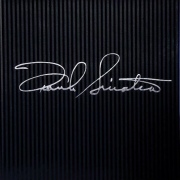 With the temperature dropping, it's time to find someone to keep you warm. Find your hookups with our online dating guide!
With the temperature dropping, it's time to find someone to keep you warm. Find your hookups with our online dating guide!
- Vocal
- 2007
- Buy the CD
Reviewed by Michael Fortes
()
But even before ’53, Sinatra was hugely popular as a featured singer in the big bands of Harry James and Tommy Dorsey, and even more so as teen idol on his own records for Columbia. Though most of the folks who gushed over those early Sinatra recordings when they first came out are probably dead by now, the rest of us can look at A Voice in Time: 1939-1952 as a grand history lesson in popular song.
The four-disc set takes advantage of the merging of Sony’s and BMG’s music divisions into one super-sized major label behemoth by surveying not just Sinatra’s earliest big band sides with James and his teen-idol years on Columbia (a Sony label), but also his popular recordings with Dorsey for the Bluebird and Victor labels (BMG properties). Being that Sinatra, even before signing with Capitol, had recorded literally hundreds of songs, a survey set of his early years was a necessity for the non-completist with little patience for sifting through the seemingly endless amount of Sinatra compilations out there. It was either that, or buy the “complete” label sets on Columbia and RCA (which are no longer complete, apparently, as this set includes previously unreleased radio broadcasts sprinkled throughout). You get the best of it all here in one neatly organized set, along with a set of informative essays with song-by-song commentary, and loads upon loads of vintage black and white photos.
Each disc is given a specific theme: the first disc covers his big band years with James and Dorsey. The second disc spotlights the solo Columbia recordings that established Sinatra as the first teen idol of popular American music. Disc three, “The Great American Songbook,” is exactly what it claims to be, and will be instructional for anyone else in the current generation of pop singers (or old school rockers who are feeling their age) who wants to re-re-reinvent these old warhorses. Frank himself would take some of these songs, like “I Get a Kick out Of You” and “That Old Black Magic,” and re-record them in far more popular versions after leaving Columbia. The possibilities available for these songs are endless, and the genesis of those possibilities can be traced back to these records.
The fourth, and arguably most interesting disc of the set, makes a case for the quality of Sinatra’s last string of Columbia recordings. These sides were recorded when Sinatra had entered his slump period, during which his records were no longer selling, his marriage was suffering, his affair with Ava Gardner also hit the skids, and worst of all, Columbia honcho Mitch Miller was forcing the Voice to record embarrassing novelty records (the most notable of which, his Dagmar duet “Mama Will Bark,” is mercifully omitted from this set).
The cherry-picked goodies that are included on disc four actually do demonstrate that Sinatra had found his new swagger – he was singing with greater confidence than he ever had before, and he was starting to throw in those funny asides that became a key part of his entertainment value. Though Frank’s career seemed like it was kaput by ’52 when he lost all his movie deals and his Columbia contract, these recordings prove that he was simply not working with the right people anymore. Obviously, someone at Capitol was shrewd enough to realize this. And the rest…
You can follow us on Twitter and Facebook for content updates. Also, sign up for our email list for weekly updates and check us out on Google+ as well.











